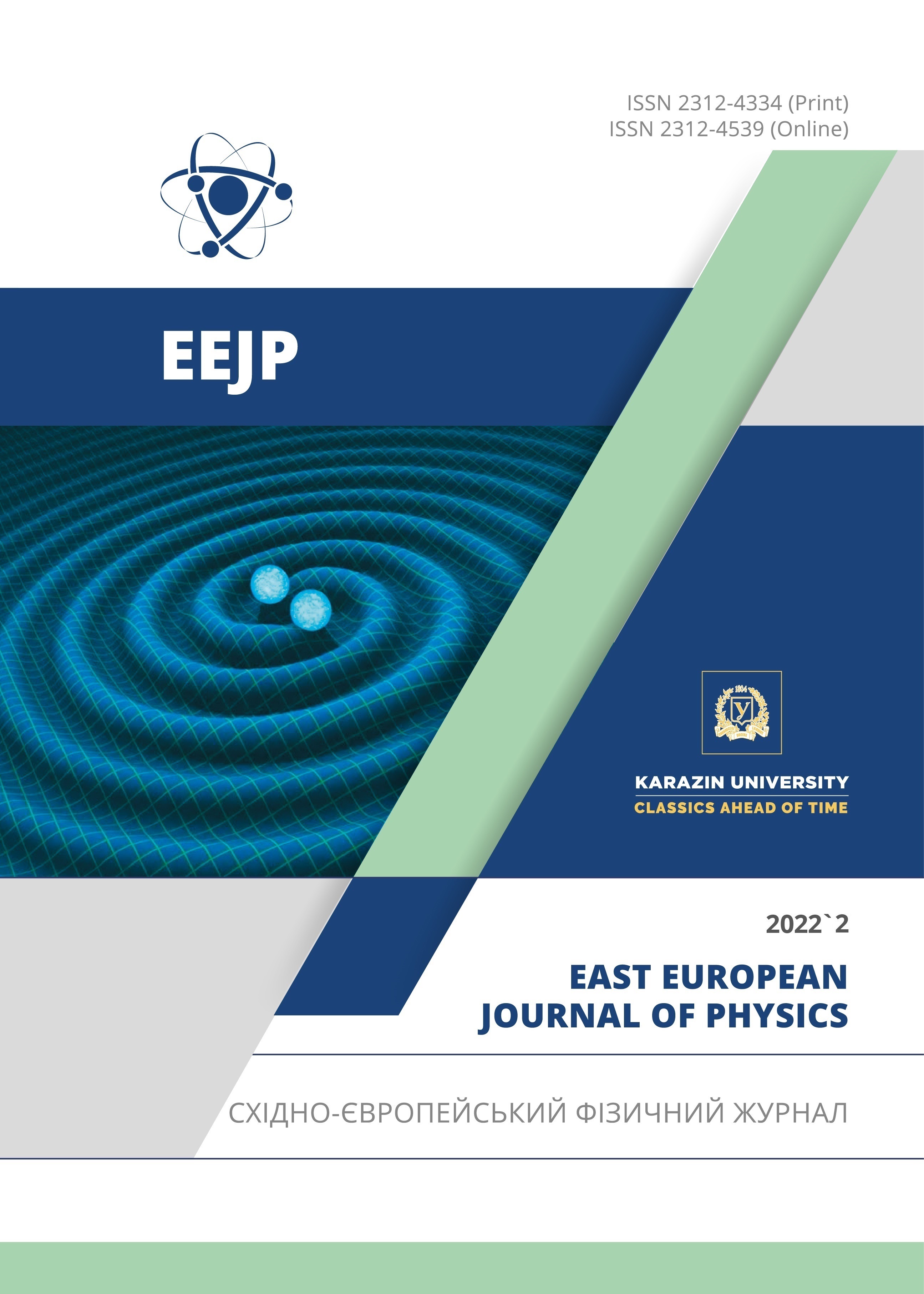Використання нелінійних операторів для розв’язування задач геометричної оптики
Анотація
Метою цієї роботи є розробка та застосування математичного апарату, побудованого на нелінійних операторах, для розв’язування задач геометричної оптики, а саме побудови зображень предметів у системах тонких лінз. Було розглянуто задачу про побудову зображення точки в тонкій лінзі на основі чого було визначено поняття оператора лінзування. Були досліджені математичні властивості оператора. Було досліджено модельну задачу про побудову зображення у складених разом тонких лінзах, на основі чого стало можливо встановити фізичну інтерпретацію встановленим раніше властивостям. Також була розглянута задача про систему лінз, що розташовані на відстані, результатом чого було введення поняття оператора зсуву. Були досліджені властивості оператора зсуву, які разом із властивостями оператора лінзування дали змогу визначити правила застосування створених операторів для розв’язування задач. Окрім розв’язку модельних задач були розглянуті такі задачі: швидкість зображення рухомої точки, коефіцієнт збільшення та побудова зображення кривих. Як приклад були побудовані зображення відрізка та дуги кола. Відрізок перейшов у відрізок, а дуга кола в дугу кривої другого порядку. Представлений математичний апарат є дуже зручним для реалізації у вигляді комп’ютерних програм, а також для дослідження зображень різних кривих.
Завантаження
Посилання
B.E.A. Saleh, and M.C. Teich, Fundamentals of photonics, 2nd ed. (John Wiley & Sons, Inc., Hoboken, New Jersey, 2007), pp. 24-34.
N.J.G. Fonseca, Q. Liao, and O. Quevedo-Teruel, IEEE Transactions on Antennas and Propagation, 68(5), 3410 (2020), https://ieeexplore.ieee.org/abstract/document/8954908.
C. He, J. Chang, J, Q. Hu, et al. Nat. Commun. 10, 4264 (2019), https://doi.org/10.1038/s41467-019-12286-3
M. Grasso, M. Korzyński, and J. Serbenta, Physical Review D, 99, (2019), https://doi.org/10.1103/PhysRevD.99.064038
D.V. Sivuhin, General physics course Volume 4: Optics, 3rd ed. (Fizmatlit, Moscow, 2005), pp. 9-89. (in Russian)
A.N. Kolmogorov, and S.V. Fomin, Elements of the theory of functions and functional analysis, 4th ed. (Nauka, Moscow, 1976), pp. 16-21. (in Russian)
P. Ramond, Group Theory: A Physicist's Survey, 1st ed. (Cambridge University Press, Cambridge, 2010)
V.A. Ilin, and E.G. Poznyak, Analytical geometry, 5th ed. (Nauka, Moscow, 1999), pp. 164-184. (in Russian)
Авторське право (c) 2022 І. В. Демиденко

Цю роботу ліцензовано за Міжнародня ліцензія Creative Commons Attribution 4.0.
Автори, які публікуються у цьому журналі, погоджуються з наступними умовами:
- Автори залишають за собою право на авторство своєї роботи та передають журналу право першої публікації цієї роботи на умовах ліцензії Creative Commons Attribution License, котра дозволяє іншим особам вільно розповсюджувати опубліковану роботу з обов'язковим посиланням на авторів оригінальної роботи та першу публікацію роботи у цьому журналі.
- Автори мають право укладати самостійні додаткові угоди щодо неексклюзивного розповсюдження роботи у тому вигляді, в якому вона була опублікована цим журналом (наприклад, розміщувати роботу в електронному сховищі установи або публікувати у складі монографії), за умови збереження посилання на першу публікацію роботи у цьому журналі.
- Політика журналу дозволяє і заохочує розміщення авторами в мережі Інтернет (наприклад, у сховищах установ або на особистих веб-сайтах) рукопису роботи, як до подання цього рукопису до редакції, так і під час його редакційного опрацювання, оскільки це сприяє виникненню продуктивної наукової дискусії та позитивно позначається на оперативності та динаміці цитування опублікованої роботи (див. The Effect of Open Access).








